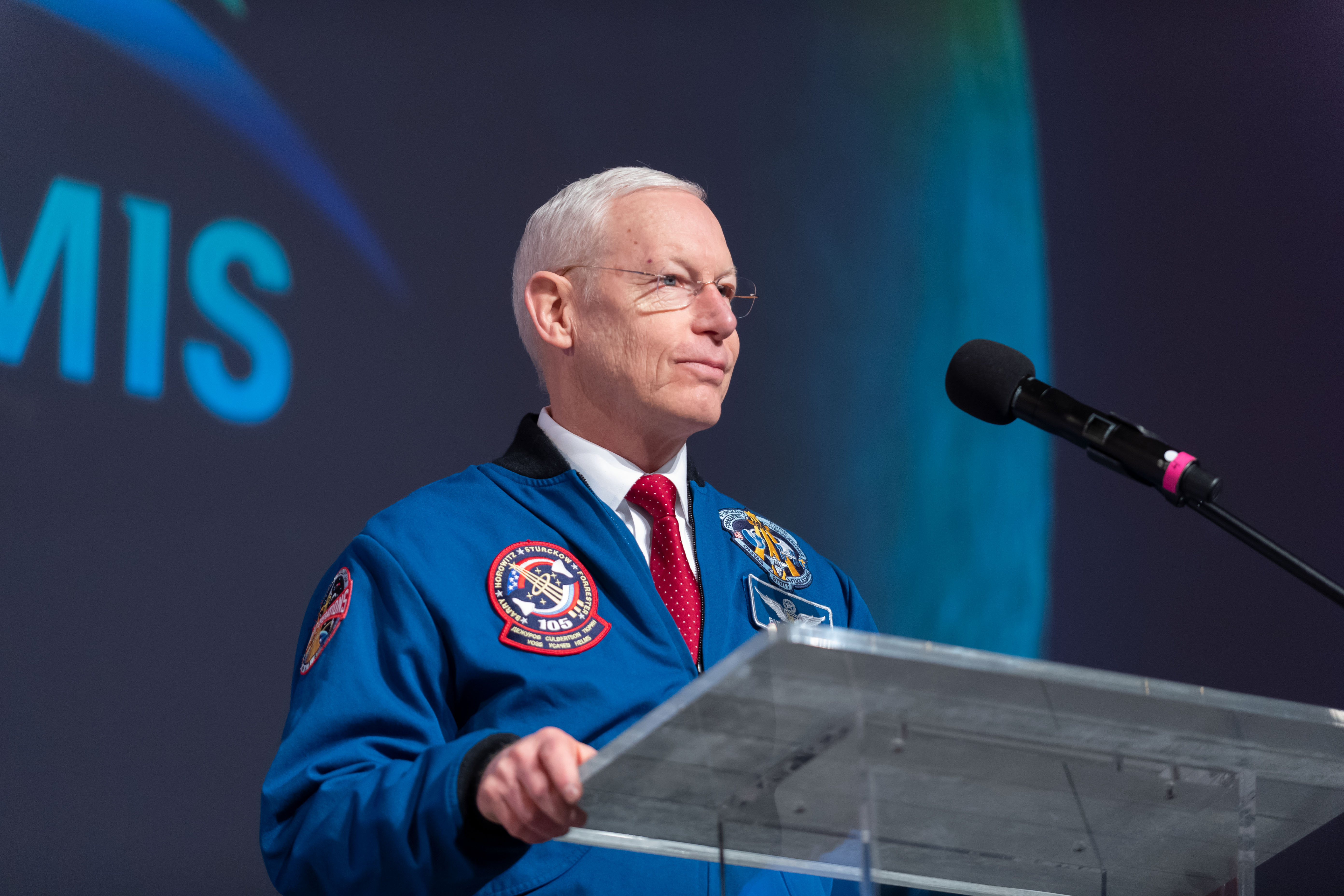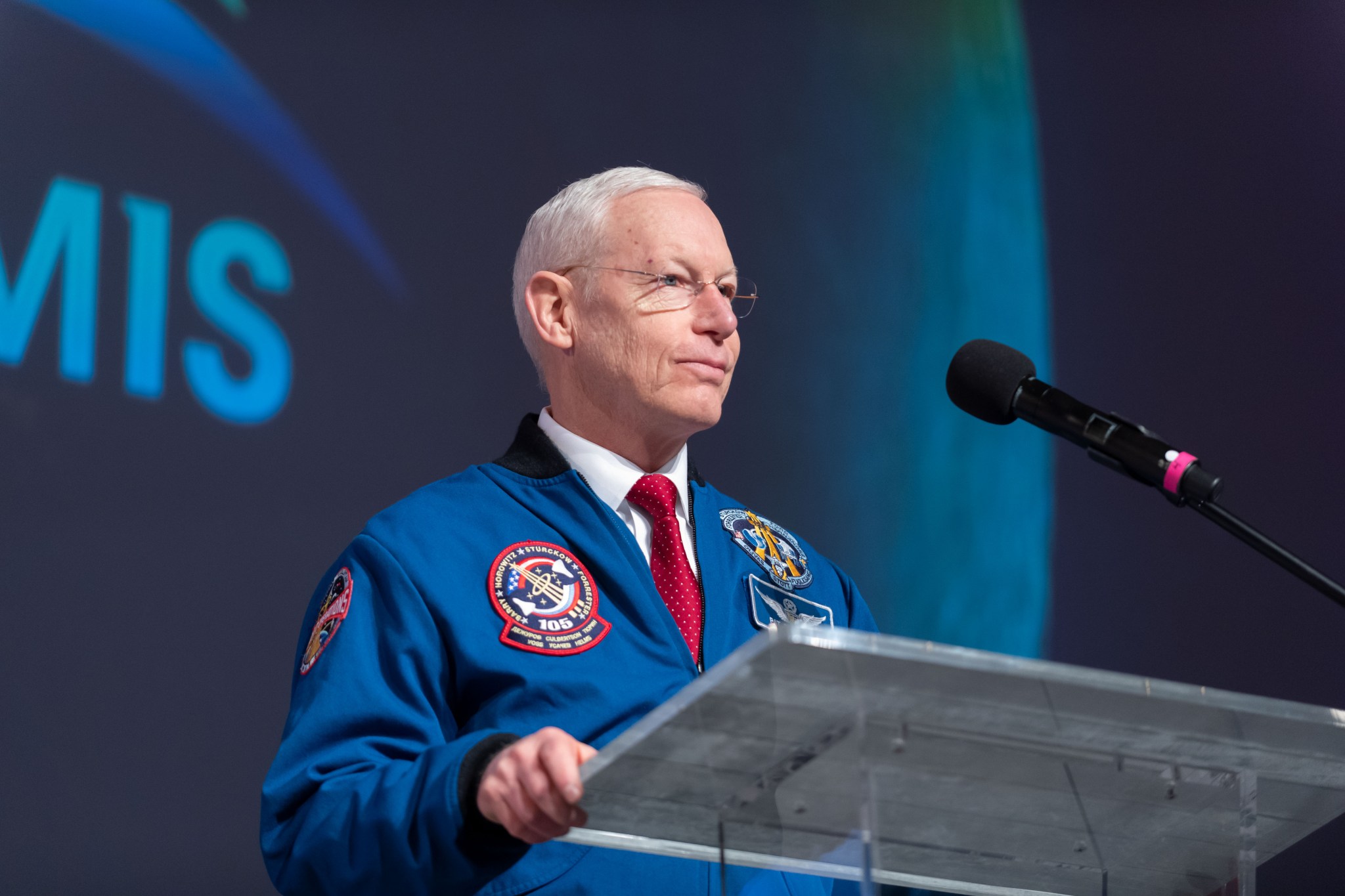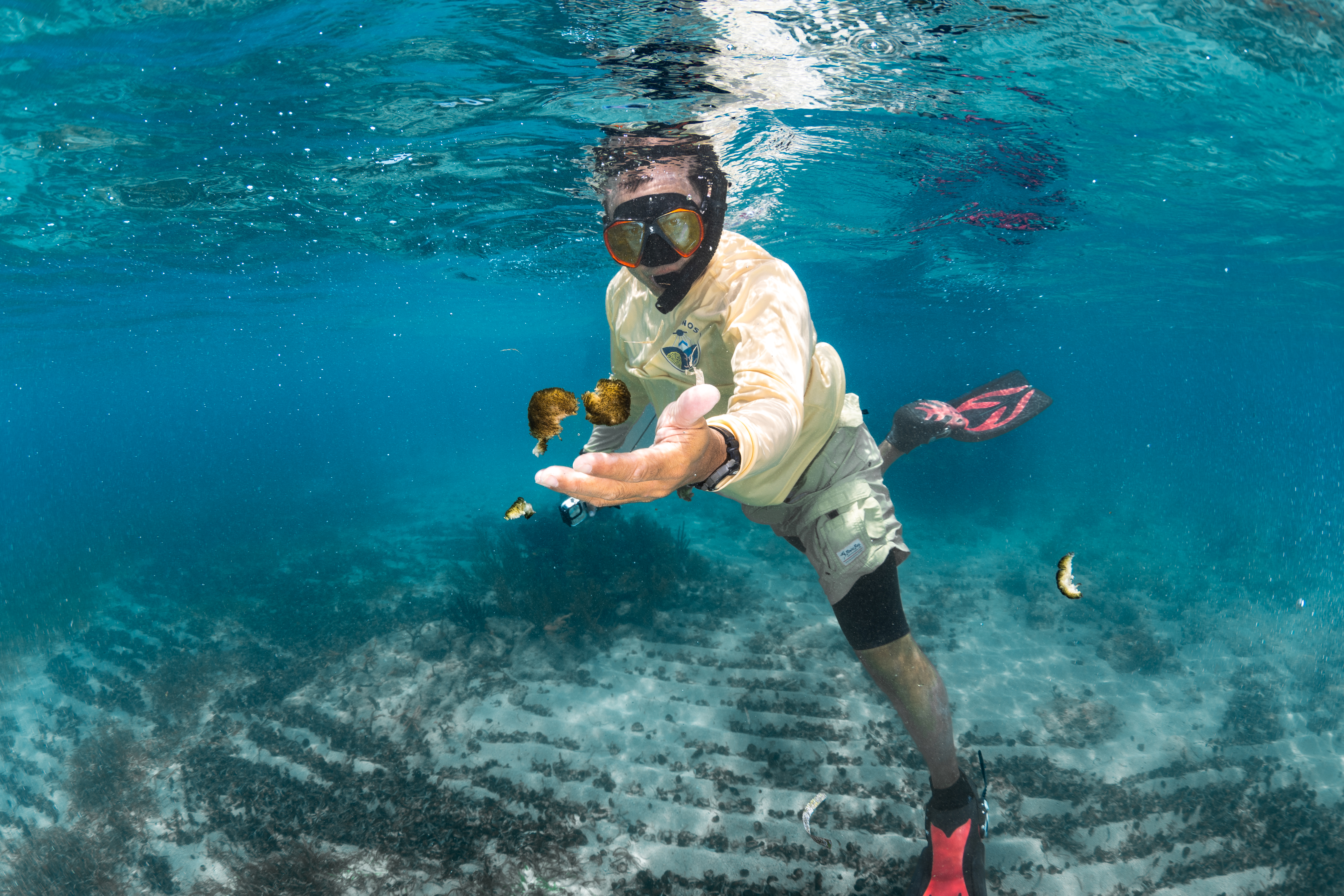Former NASA Chief Astronaut Patrick Forrester Retires
July 3, 2024 RELEASE: J24-011 NASA astronaut Patrick G. Forrester retired June 29, after a career spanning 31 years of service and three spaceflights. He went on to become chief of NASA’s Astronaut Office, and most recently served as an advisor to the associate administrator for the Space Operations Mission Directorate at NASA Headquarters in […]

July 3, 2024
RELEASE: J24-011
NASA astronaut Patrick G. Forrester retired June 29, after a career spanning 31 years of service and three spaceflights. He went on to become chief of NASA’s Astronaut Office, and most recently served as an advisor to the associate administrator for the Space Operations Mission Directorate at NASA Headquarters in Washington.
Forrester joined the agency in 1993 as an aerospace engineer at NASA’s Johnson Space Center in Houston and was selected to become an astronaut in 1996. He dedicated his early career to the assembly of the International Space Station, spending 40 days in space and completing four spacewalks totaling 25 hours and 30 minutes.
“Pat’s dedication and commitment to the advancement of human space exploration over the past three decades has been an inspiration, not just to the Johnson workforce, but the Artemis generation as well,” said NASA’s Johnson Space Center Director Vanessa Wyche. “I want to extend my sincere gratitude to Pat for his outstanding contributions. His legacy will continue to impact the agency and the next generation of explorers for many years to come. Many congratulations to Pat; I wish him all the best in his retirement.”
Forrester launched to the space station for the first time in August 2001 aboard space shuttle Discovery in support of STS-105. Forrester was the mission’s prime robotics operator, helping to install the Leonardo Multi-Purpose Logistics Module that would help deliver 2.7 metric tons of supplies to the station. He flew again with STS-117 in June 2007 aboard space shuttle Atlantis, delivering the orbiting laboratory’s second starboard truss and its third set of solar arrays. His final spaceflight, STS-128 aboard Discovery, launched in August 2009. As prime robotics officer, Forrester again installed Leonardo and the crew transferred 18,000 pounds of supplies.
Forrester continued to support the astronaut corps through numerous leadership positions, serving as technical assistant to the director of Flight Crew Operations. He was a crew representative of robotics development on the space station and shuttle training and onboard crew procedures. Forrester also held the role of spacecraft communicator, or CAPCOM, for both station and shuttle missions.
In 2017, Forrester became chief of the Astronaut Office, overseeing the first flights of NASA’s Commercial Crew Program and helping develop the initial architecture for the agency’s Artemis campaign. In 2020, he stepped down from his chief position, handing over to NASA astronaut Reid Wiseman.
“Pat’s leadership was instrumental during a time where NASA was just starting to launch our astronauts from American soil again,” said Norm Knight, director of flight operations at NASA Johnson. “I admire his courage, his tenacity, and his character during such a dynamic time in our history, and I thank him for laying a strong foundation, not just in his role as chief astronaut, but through his career in human spaceflight. To me, he is a mentor and a friend, and I wish him all the best.”
At the time of his retirement, Forrester supported the Space Operations Mission Directorate, serving as the director of the Cross-Directorate Technical Integration Office and an adviser to the directorate’s associate administrator and fellow NASA astronaut Ken Bowersox.
“Pat is an incredible leader who has provided invaluable service to NASA’s astronaut corps and human spaceflight during his career,” said Ken Bowersox, associate administrator for space operations at NASA. “In the Space Operations Mission Directorate, his influence will be felt long after his departure as we continue to work every day in low Earth orbit and prepare for the future near Earth, at the Moon, Mars and into the solar system.”
An El Paso, Texas, native, Forrester earned a bachelor of science degree in applied sciences and engineering from the U.S. Military Academy, West Point, New York, and a master of science in mechanical and aerospace engineering from the University of Virginia, Charlottesville. A retired colonel in the U.S. Army, Forrester logged more than 5,300 hours of flight time in over 50 different aircraft as an operational aviator and test pilot, retiring in 2005.
“It has been an honor to serve our nation as a member of the NASA family. Many of the stories I will tell for the rest of my life will be related to my experiences here,” said Forrester. “I look forward to watching my friends and colleagues circle the Moon and eventually land on its surface – with the help of all those serving faithfully on the ground. I am forever grateful.”
Read Forrester’s full biography at:
-end-
Chelsey Ballarte
Johnson Space Center, Houston
281-483-5111
chelsey.n.ballarte@nasa.gov
What's Your Reaction?



















.jpg?#)

































